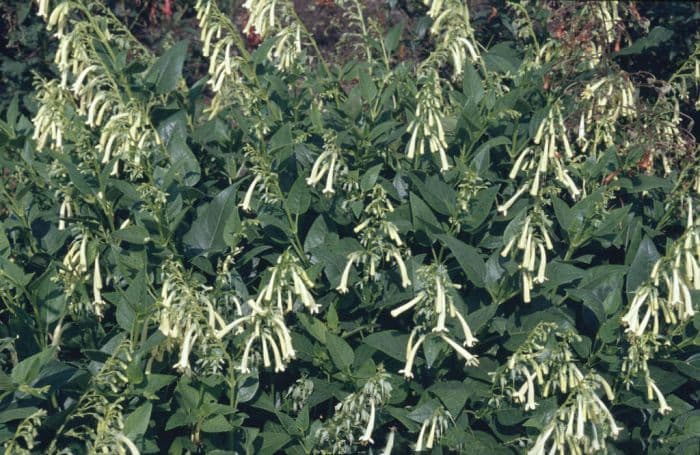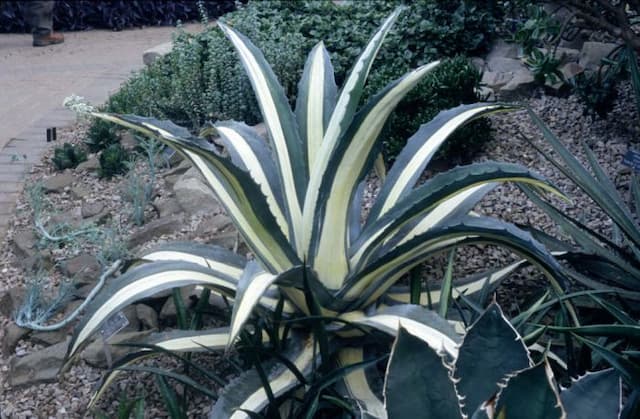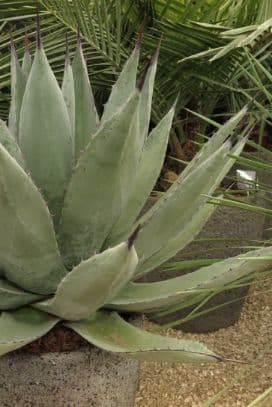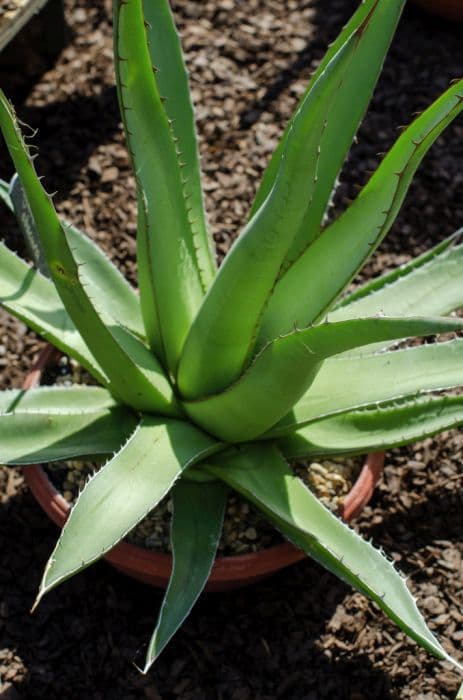Nelson's Lachenalia Lachenalia 'Nelsonii'

ABOUT
Lachenalia 'Nelsonii', also known as Cape cowslip, is a striking plant that displays a vibrant palette of colors. It is characterized by its attractive, bell-shaped flowers which typically bloom in a striking combination of greens, yellows, purples, and often with a hint of red. The flowers are arranged in a dense, conical cluster at the top of a sturdy flower spike that emerges from a rosette of fleshy, strap-shaped leaves. The foliage is bright green and sometimes spotted or mottled, adding to the plant’s ornamental appeal. The blooms of the Cape cowslip are especially noted for their unique color transitions and patterns, which can create a vivid display in a garden setting.
About this plant
 Names
NamesFamily
Asparagaceae
Synonyms
Nelson's Lachenalia, Cape Cowslip, Soldier Boys
Common names
Lachenalia 'Nelsonii'.
 Toxicity
ToxicityTo humans
Lachenalia 'Nelsonii', more commonly referred to as Lachenalia or cape cowslip, may contain compounds that are potentially toxic to humans. Members of the Lachenalia genus are known to contain lycorine and other related alkaloids. If ingested, these alkaloids can cause symptoms such as nausea, vomiting, diarrhea, and abdominal pain. In severe cases, ingesting parts of the plant may lead to more serious symptoms such as tremors, salivation, hypotension (low blood pressure), and even respiratory issues. It is advisable to keep the Lachenalia plant out of reach of children and to seek medical assistance if ingestion occurs.
To pets
Lachenalia 'Nelsonii', commonly known as Lachenalia, is toxic to pets due to the presence of lycorine and other alkaloids. If a pet ingests any part of the plant, they may exhibit symptoms such as vomiting, diarrhea, drooling, and lethargy. In more severe cases, ingestion may result in tremors, seizures, and cardiac abnormalities. Owners should ensure their pets do not have access to this plant and seek immediate veterinary care if they suspect their pet has ingested any part of a Lachenalia.
 Characteristics
CharacteristicsLife cycle
Perennials
Foliage type
Deciduous
Color of leaves
Mixed
Flower color
Red
Height
1 foot (30 cm)
Spread
6 inches (15 cm)
Plant type
Bulb
Hardiness zones
8
Native area
South Africa
Benefits
 General Benefits
General Benefits- Decorative Appearance: The Lachenalia 'Nelsonii', commonly known as Cape Cowslip, features attractive foliage and vibrant flowers that add a splash of color to gardens and indoor spaces.
- Low Maintenance: Cape Cowslip is generally easy to care for, requiring minimal maintenance, making it an excellent choice for busy or novice gardeners.
- Drought Tolerance: This plant is relatively drought-tolerant once established, reducing the need for frequent watering.
- Pest Resistance: Cape Cowslip often displays resistance to common pests, minimizing the need for chemical treatments.
- Seasonal Interest: With its winter to spring blooming period, the Cape Cowslip offers seasonal interest during times when many other plants may not be flowering.
- Compact Growth: The plant's compact size makes it suitable for small gardens or as part of a container display on patios, balconies, or indoor settings.
 Medical Properties
Medical PropertiesThis plant is not used for medical purposes.
 Air-purifying Qualities
Air-purifying QualitiesThis plant is not specifically known for air purifying qualities.
 Other Uses
Other Uses- Lachenalia Nelsonii bulbs can be ground into flour and used as food in emergency situations. However, this is not a common practice due to the potential toxicity of certain Lachenalia species.
- The Lachenalia Nelsonii can be used in horticultural therapy programs, offering sensory stimulation and a focus for activities in therapeutic gardening projects.
- Dried Lachenalia Nelsonii flowers can be used in potpourri mixtures to add color and a subtle fragrance to a room.
- Artists may use the vibrant colors of the Lachenalia Nelsonii as a natural pigment source for botanical illustrations or eco-friendly dyes.
- Incorporating Lachenalia Nelsonii into educational programs can help teach children about plant life cycles and bulb propagation.
- Lachenalia Nelsonii's unique floral structure can inspire designs in fields such as architecture, fashion, and home decor.
- Photographers may utilize the striking appearance of Lachenalia Nelsonii for still life photography or as a model for exploring macro photography techniques.
- Floral arrangements including Lachenalia Nelsonii can be used as a natural way to add color to winter-themed events, since they bloom in the cooler months.
- Plant enthusiasts may collect different varieties of Lachenalia, including Lachenalia Nelsonii, to create a specialized collection focusing on South African flora.
- The Lachenalia Nelsonii can be used as a natural indicator plant in gardens to signal the onset of the cooler season for better planning of crop rotations or plantings.
Interesting Facts
 Feng Shui
Feng ShuiThe Lachenalia is not used in Feng Shui practice.
 Zodiac Sign Compitability
Zodiac Sign CompitabilityThe Lachenalia is not used in astrology practice.
 Plant Symbolism
Plant Symbolism- Rarity: Lachenalia Nelsonii, also known as Nelson's Lachenalia, is a relatively rare plant which can symbolize uniqueness or the value of scarce natural beauty.
- Uniqueness: As an uncommon species, it represents the distinctive and uncommon, which can be likened to having a unique personality or feature in a person.
- Astounding beauty: With its striking flowers, Nelson's Lachenalia signifies astonishment and appreciation for the beauty around us.
- Transformation: As a bulb that blooms into a colorful plant, it could symbolize growth and the idea of blossoming into something more beautiful or mature over time.
- Overcoming adversity: As a plant that can thrive in challenging conditions, it may represent the ability to overcome obstacles and flourish despite hardships.
 Water
WaterCape Cowslip should be watered thoroughly once the top inch of soil feels dry to the touch, typically every 7 to 10 days. The method involves watering the soil directly until the excess water drains out of the bottom of the pot, ensuring deep hydration without waterlogging the roots. During its active growth in the spring and summer, maintain consistent moisture, using roughly a half to one gallon of water depending on pot size and environmental conditions. In the dormant winter months, reduce watering frequency to prevent root rot.
 Light
LightCape Cowslip thrives in bright, indirect light but can tolerate some direct morning sunlight. The best spot for this plant is near an east-facing window where it can receive gentle sunlight without the harshness of midday sun. Avoid placing the plant in full afternoon sun, as this can scorch its leaves.
 Temperature
TemperatureCape Cowslip prefers moderate temperatures, ideally between 60 and 70 degrees Fahrenheit. This plant can survive minimum temperatures of 50 degrees Fahrenheit but may suffer if exposed to colder conditions for prolonged periods. The maximum temperature tolerated is around 80 degrees Fahrenheit; beyond this, the plant may experience stress.
 Pruning
PruningPrune Cape Cowslip after it has finished flowering to remove spent blooms and encourage a tidy appearance. Pruning is not required for plant health but can promote a bushier growth form. The best time to prune is in the late summer or early fall, trimming back only the dead or yellowing leaves. Reduce frequency of pruning to once per season or as needed to shape the plant.
 Cleaning
CleaningAs needed
 Soil
SoilLachenalia 'Nelsonii', also known as Cape Cowslip, prefers a well-draining soil mix composed of two parts sand or grit to one part loam or a good quality potting soil. The addition of perlite or pumice can enhance drainage. Aim for a slightly acidic to neutral pH, around 6.0 to 7.0.
 Repotting
RepottingCape Cowslip should be repotted every two to three years or when it becomes root-bound. The end of the dormant period, just before the new growth starts, is the best time for repotting.
 Humidity & Misting
Humidity & MistingCape Cowslip prefers moderate humidity levels, ideally between 40-60%. Too high humidity can promote fungal diseases, so it's important to ensure good air circulation around the plant.
 Suitable locations
Suitable locationsIndoor
Place in bright, indirect light and protect from drafts.
Outdoor
Plant in partial shade and shelter from strong winds.
Hardiness zone
8-10 USDA
 Life cycle
Life cycleLachenalia 'Nelsonii', commonly known as Nelson's Lachenalia, begins its life cycle as a bulb, which after a period of dormancy, typically initiated by cooler temperatures and shorter daylight hours, sprouts in late winter to early spring. Upon sprouting, the plant produces lance-shaped leaves that form a rosette at the base and the growth of a stem that carries the bell-shaped, brightly colored flowers. The flowering period occurs in late winter to spring, during which pollination by insects, such as bees, can lead to the production of seeds. After flowering, the plant goes into a period of senescence; the foliage begins to yellow and wither as the plant enters dormancy, which is a survival strategy for the dry season. During the dormancy stage, the bulb remains underground where it conserves energy and resources, waiting for the next cycle of growth. When the environmental conditions become favorable again, the bulb reactivates, and a new growth cycle commences, completing the life cycle of the Lachenalia 'Nelsonii'.
 Propogation
PropogationPropogation time
Winter to Spring
Lachenalia 'Nelsonii', commonly known as Cape cowslip, is typically propagated through bulb division. The best time to propagate is immediately after the plant has finished flowering and is entering its dormant period. You gently separate the offsets, which are small bulbs that grow at the base of the parent plant, from the mother bulb. These offsets can then be planted in a well-draining soil mix, placed just below the surface. Ideally, they should be spaced about an inch (2.54 cm) apart to allow room for growth. Water the newly planted offsets sparingly until you see new growth, indicating that they have established roots. After this point, they can be treated as mature plants.









